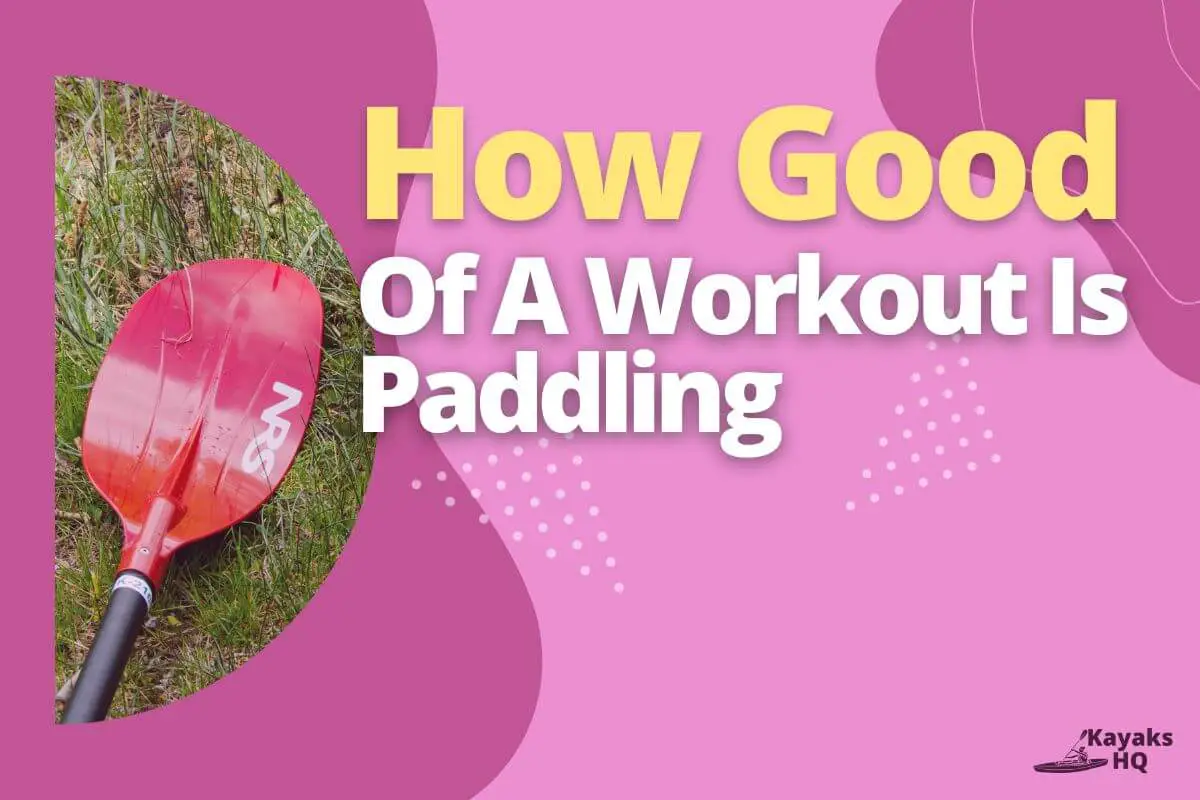Paddling is one of the best ways to get a full-body workout. But how intense is it really?
If you’re looking to get a great workout while having fun, there are a lot of different activities that you can try. One of those activities is paddling.
In this blog post, we’ll look at the intensity level of paddling and some other benefits that you can enjoy from this fun activity.
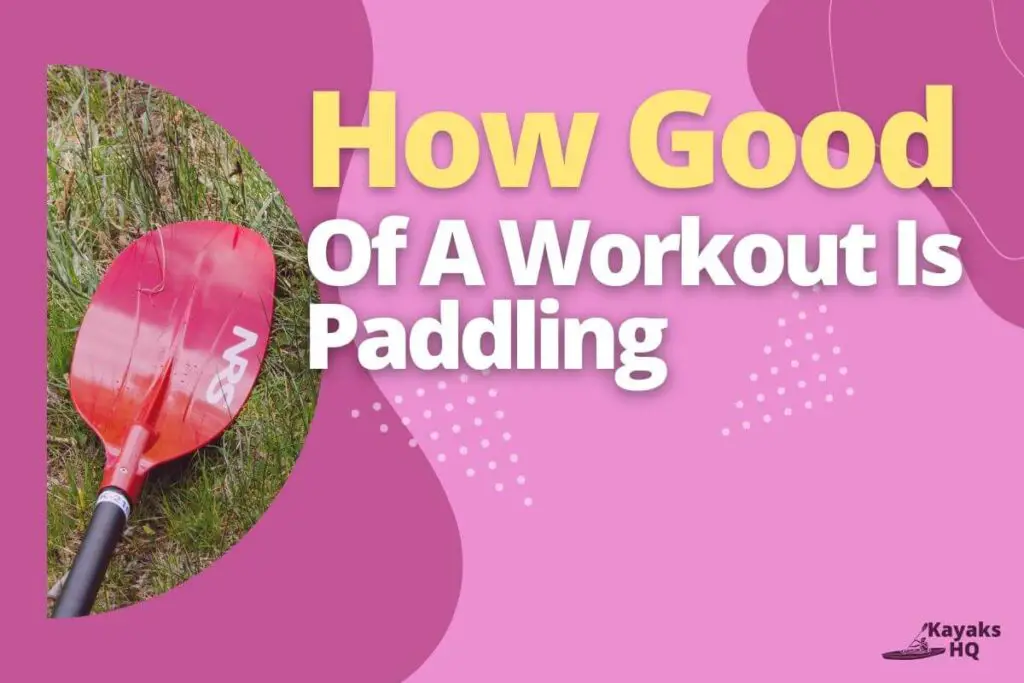
Here’s The Answer To How Good Of A Workout Is Paddling
Paddling is a really good workout because it works your entire body, from your arms to your core to your legs. It’s a low-impact exercise that’s safe for almost everyone.
Also, you can burn lots of calories when compared to other exercises. Paddling is a low-impact, full-body workout that can help improve your cardiovascular health and develop your core muscles.
In fact, paddling is a full-body workout that can strengthen your upper back, shoulders, arms, chest, and abs. Yet, it’s not an intense cardio workout and isn’t likely to leave you breathless.
It’s a full-body workout that tones your core, arms, and legs while also improving your balance and flexibility. Obviously, the intense cardio benefits of paddling make it a go-to workout for anyone looking to lose weight and stay fit.
How Long Does It Take To Become Physically Fit Through Paddling?
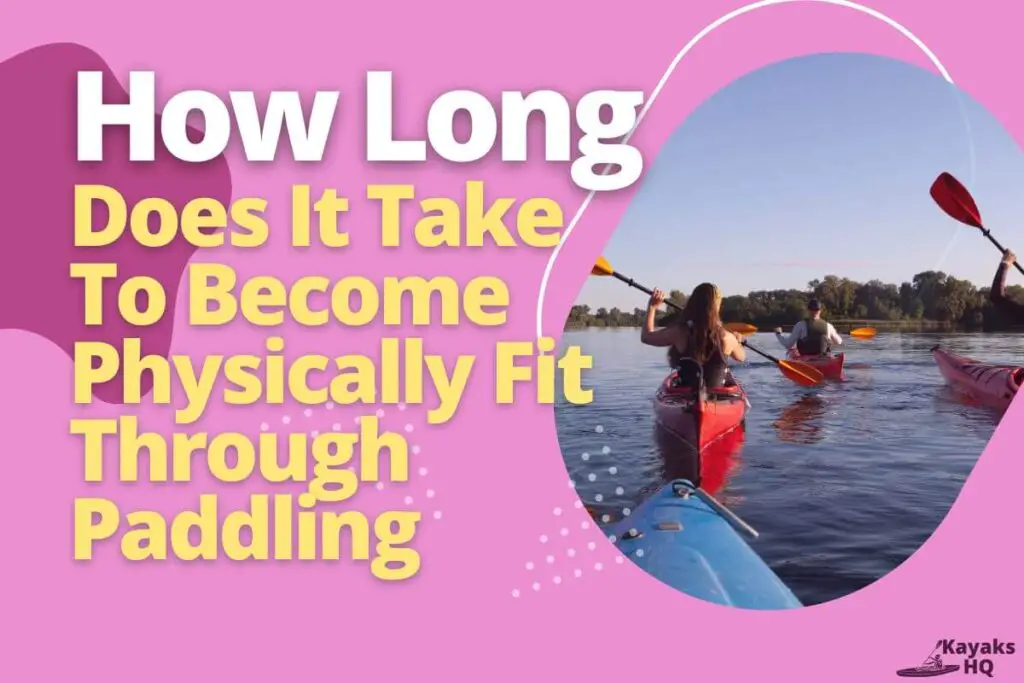
Just how long it takes to get fit by paddling depends on a few different factors, including your fitness level, how often you paddle, how long you paddle, and how hard you push yourself.
If we were to look at these elements individually and assign them based on their importance (the top being the most important), we could break down the answer like this:
- Frequency of paddling
- Duration of paddle
- Intensity levels
- Calorie burn
Paddlers new to the sport should expect to spend several months developing their upper body strength and stamina. A strong core is also important for good form and paddling efficiency.
Beginner paddlers can expect to see significant improvements in their physical health after a few months of consistent training.
Interval training, or periods of high-intensity paddling interspersed with rest, is a good way to improve fitness in a relatively short period of time.
Do I Need Any Special Equipment For Paddling?
There are no special equipment requirements for paddling. You can use a kayak, canoe, or paddleboard (and rent or buy one if you don’t have one). Just make sure that the vessel has enough room to accommodate you and your gear.
If you’re using a paddleboard, consider getting an adjustable paddleboard so that it can grow with your skill level as well as serve different purposes like surfing and racing.
A canoe or kayak is a good way to get started. Paddle boarding is an excellent way to get started. You can get a good workout and get some vitamin D at the same time.
When It Comes To Paddling, What Is The Most Critical Component Of An Effective Workout?
There is no single approach to paddling that will get you in the best shape. It all depends on your goals and fitness level. We’ve broken down the most important parts of a good workout so you can customize your own paddling routine:
- The technique is crucial to good paddling, especially as you strengthen and build endurance. When it comes to technique, there are many different factors at play—how well you paddle, how fast you paddle, where you’re going (distance), how hard do it (intensity), and how often (frequency).
- Proper form will help you get the most out of your workout and avoid injury. Good form also helps you to work the correct muscles and get the most benefit from the exercise.
- The next important part of paddling is intensity. You should paddle at a level that challenges you and gets your heart rate up. Paddling is a great form of exercise because it is a low-impact activity that is easy on your joints. It is also a great way to get your heart and lungs working.
- A good workout when it comes to paddling is duration. You should paddle for at least 30 minutes to get a good workout. Paddling is a great form of exercise because it is a low-impact activity that is easy on your joints. It is also a great way to get your heart and lungs working.
Use Proper Form
In order to keep your spine straight, you want to keep your knees bent and use the core muscles. This will allow you to paddle with a good amount of power and endurance.
- Hand position: Your hands should be placed directly over the blade in a way that makes it easy for them to slide down on both sides of the paddle when needed. You should also have enough room between your thumb and index finger so that they can feel comfortable holding onto their paddles without having any strain put on their fingers or wrists.
- Arm position: As far as arm positioning goes, it’s important not to let them go too far out from your body, or else this can cause strain on both shoulders when paddling longer distances (which is why many experts recommend keeping elbows close together). It’s also important not to hold onto paddles too tightly because this could lead to one having less control over movements while using them.
Find a Supportive Partner
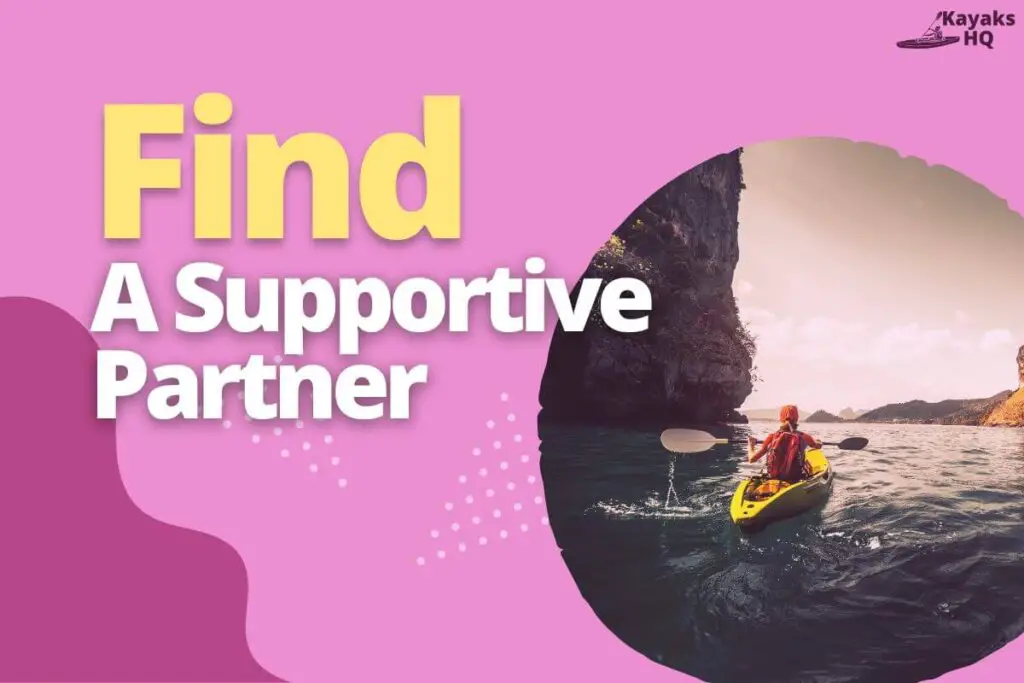
You don’t need to be in the water by yourself. In fact, it’s actually recommended that you have a partner with you when you paddle.
Having a support partner will make your workout more enjoyable and motivate you to work harder because they are there with you.
Find someone who is interested in paddling! If they are not already familiar with the sport or if they don’t know how much fun it can be, this might be challenging.
Once both parties have agreed on doing some kind of exercise together (whether or not it’s kayaking), then there are two things that should happen next: 1) set goals together and 2) set up ground rules for when one person isn’t feeling motivated enough.
Get Your Heart Rate Up
Paddling is a great way to get your heart rate up, which means that it can also help you lose weight.
You can get your heart rate up by either paddling longer or faster, depending on how much time you have available and how intense of an exercise you want to do.
The most important thing is to keep track of what kind of workout it is so that you know how hard (or easy) it was for you!
Proper Hydration Is Key
When it comes to paddling, proper hydration is key. Water is the best source of hydration and is critical for your body’s function, particularly for your brain, which relies on water for many vital functions.
As you exercise, you sweat, and your body loses fluids through perspiration. When this happens, you need to replace those fluids with water or sports drinks containing electrolytes that help restore minerals lost through sweating.
It’s important when engaging in any exercise activity—especially ones that are intense, like paddling—to drink enough fluids before and after the workout so that you’re properly hydrated throughout the session.
Water is always best because it has no added sugars, calories, or sweeteners like sports drinks do; however, if you prefer other types of beverages, then go right ahead!
What Are The Benefits Of Paddling As A Workout?
Paddling is a great way to get a full body workout, as it works the lower body, arms, and core. You’ll be working hard on your heart rate and building endurance in no time.
If you’re looking for an effective low-impact routine that you can enjoy with friends or family (or even by yourself), paddling is a great option!
The best part about this sport is how accessible it is to everyone—even if you’re not an athlete or in shape, there’s nothing stopping you from giving it a try!
Risks Associated With Paddling As Workout
Paddling is a low-impact workout that can be a good option for people of all ages. It’s easy on the joints, making it a great choice for older adults, but also an excellent workout for people with mobility issues or joint pain.
You can do it alone or in a group, and since it requires minimal equipment, you don’t need to worry about finding space at the gym either.
Paddling is also one of the best ways to spend time outdoors – something we know more and more people are looking to pursue as they seek the balance between their work and personal lives.
Paddling is a great way to burn calories and build muscle while also taking in some fresh air and experiencing nature at its finest, even if you just have a limited amount of time.
How To Prepare For A Good Paddling Session
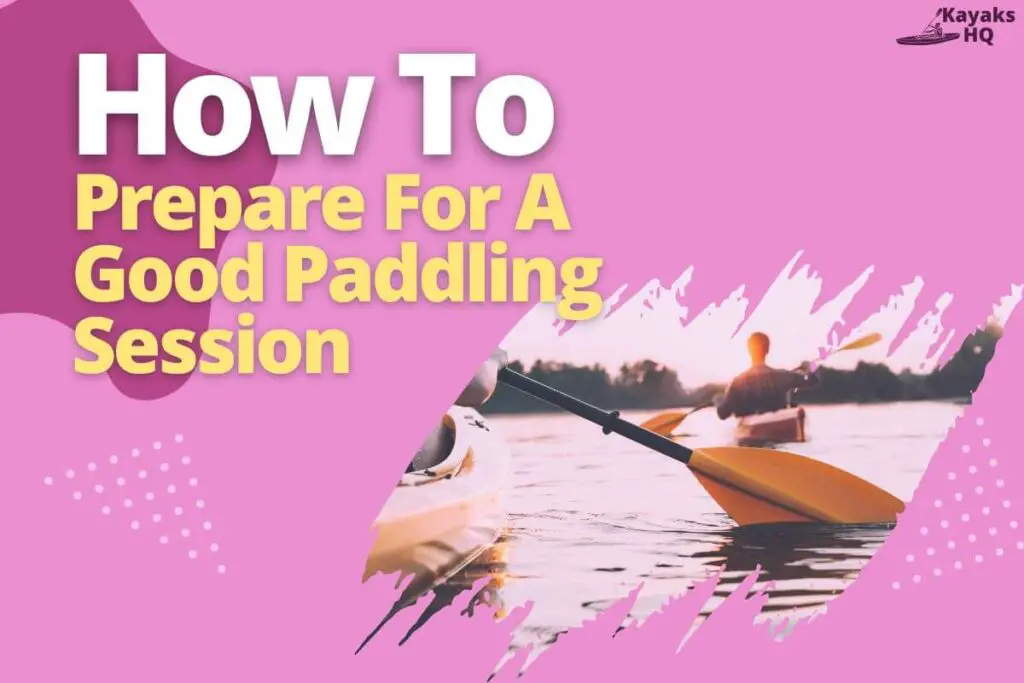
Before you head out, make sure to prepare properly. As with any sport or exercise routine, it’s important to warm up and stretch before jumping into paddling.
If your muscles are tight and cold, they can get injured more easily. You should also hydrate before starting – dehydration can be dangerous when it comes to physical activity!
Are There Any Negative Aspects About Paddling?
Paddling is a low-impact exercise, which means that it’s good for people with joint problems or back problems. This makes it especially suitable for older adults and those who are trying to recover from an injury.
However, if you’re looking for a higher-intensity workout, paddling may not be the best option for you.
Can You Lose Weight Paddling?
Absolutely! Paddling is one of the best workouts you can do, and it’s fun to boot! You can get in shape paddling on flat water with your friends or family.
You can also take a class and learn how to paddle in windy conditions or surf waves on the open ocean. Paddling burns calories builds muscle, and improves cardiovascular health.
How Many Calories Does Paddling Burn?
To determine your own calorie burn, multiply your weight by the following factors:
- Body weight: 50 calories per pound for low-intensity paddling or 100 calories per pound for high-intensity paddling. This can increase to 200 calories per pound during sprinting and downhill portions of your paddle.
- Body fat percentage: The higher, the more calories you will burn. If you have a low body fat percentage (less than 10%), then add 50% to your total calorie expenditure estimate; if it is over 30%, subtract 25%. Your actual number may also vary depending on how hard or fast you paddle and what kind of stroke you use (see below).
Who Should Avoid Paddling As A Workout?
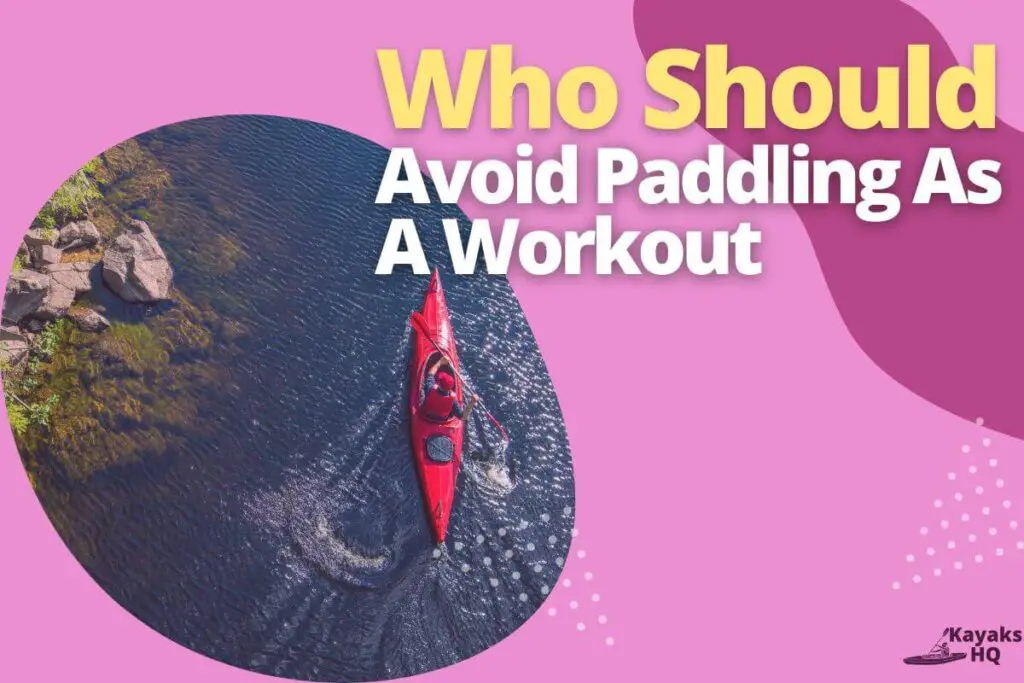
Paddling is a great workout for anyone, but not everyone. If you have pre-existing medical conditions that make it unsafe to engage in strenuous physical activity, then paddling is probably not the right choice for you.
This includes people with heart conditions, joint problems, back problems, balance issues, neck problems (such as those who experience frequent headaches), breathing issues (like asthma), diabetes, or high blood pressure.
If you have a history of stroke or any other serious injury or illness that may cause mobility issues (such as paralysis), then paddling could be dangerous to your health and safety.
Conclusion
We know that paddling is a great workout – it’s a lot of fun, and it’s a great way to get in shape. However, it is also a fun way to travel. In this blog post, we will discuss how you can get in shape while paddling and what the benefits are of paddling.
Paddling in a group is also a great way to meet new people. When you paddle with other people, you can talk with them, learn a lot, and even make friends. If you paddle by yourself, you will just be going through the motions.
If you’re interested in paddling in a different environment, then you should try out kiteboarding. Kiteboarding is a great way to get in shape while enjoying the outdoors, and there are many benefits to kiteboarding.
As a bonus, it’s a terrific way to make new friends. So there you have it, everything you need to know about how good of a workout is paddling. Be sure to check back for new posts on this topic.

